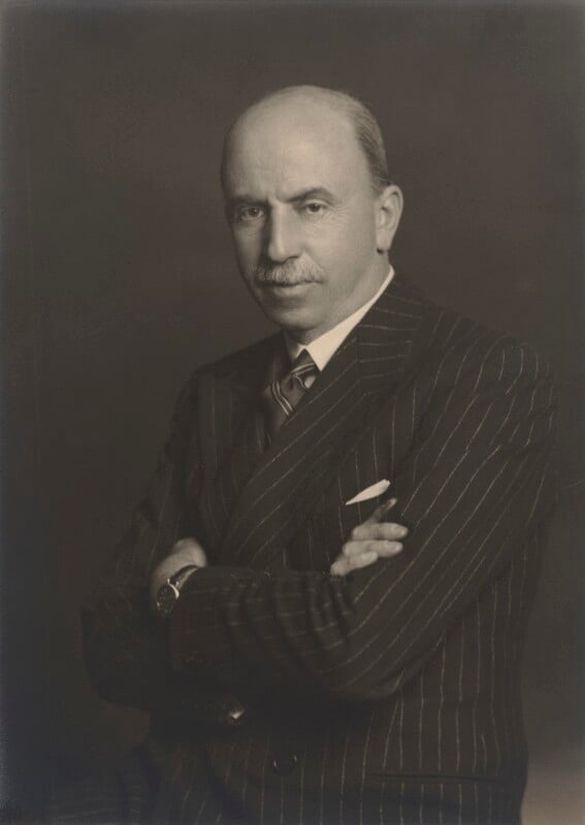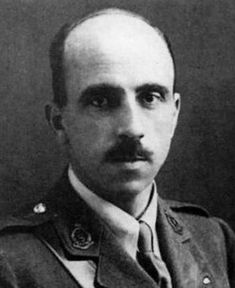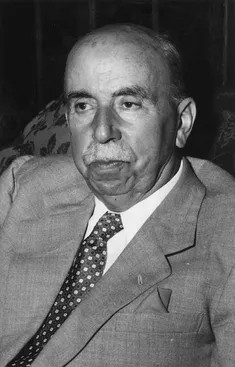Sir Harold Gillies
1882 - 1960Sir Harold Gillies was a pioneering plastic surgeon who treated soldiers suffering from severe facial wounds received in the First World War. He also pioneered one of the first gender-affirming surgeries in 1946, paving the way for Trans medicine and patient wellbeing. He lived for many years in Camden at 71 Frognal, in Hampstead where a blue plaque celebrates his life.

Sir Harold Gillies was a pioneering plastic surgeon who treated soldiers suffering from severe facial wounds received in the First World War. He also pioneered one of the first gender-affirming surgeries in 1946, paving the way for Trans medicine and patient wellbeing. He lived for many years in Camden at 71 Frognal, in Hampstead where a blue plaque celebrates his life.




About Sir Harold Gillies
Harold Delf Gillies was born in Dunedin, New Zealand on 17 June 1882. He came to the UK to study medicine at Cambridge University’s Gonville and Caius College and also trained at St Bartholomew’s Hospital, London.
Pioneering facial reconstruction surgery
At the outbreak of the First World War he volunteered for the Royal Army Medical Corps and was sent to France to work with wounded soldiers. He recognised that many horrific facial injures were sustained by soldiers through sniper fire and heavy bombardment. When he was transferred back to England he petitioned the War Office to set up a new hospital to treat soldiers with these facial disfigurements. At the time, many soldiers with these types of injuries were stared at and avoided in public, in many cases leading to severe depression and sometimes suicide.
“The reactions could be very extreme…This was a time when losing a limb made you a hero, but losing a face made you a monster.”
Historian Lindsey Fitzharris, 2022, NPR interview about her book The Facemaker: A Visionary Surgeon's Battle to Mend the Disfigured Soldiers of World War I.
In 1917 Gillies opened the Queen’s Hospital in Sidcup which was the world’s first hospital specifically for the treatment of facial injuries. Gillies’ aims were to help returning soldiers to lead easier lives by performing surgeries to enable them to eat, speak and to reconstruct their faces. These aims helped veteran soldiers return to their lives with less fear. He pioneered new plastic surgery techniques to rebuild facial bones and reconstruct soft tissue to repair facial structures and appearance. From 1917 – 1925 Dr Harold Gillies performed 11,000 operations on 5,000 soldiers with facial injuries, helping change thousands of lives and laying the foundations of modern plastic surgery. In 1920 he shared his new methods by publishing a book called Plastic Surgery of the Face, Based on Selected Cases of War Injuries and was knighted for his war services in 1930. He is known as ‘the Father of Plastic Surgery’.
During the Second World War Gillies opened plastic surgery units across the country and advised the Ministry of Health and the military forces on the treatment of soldiers. He continued to pioneer plastic surgery methods and trained many doctors in these procedures. He worked at Rooksdown House in Basingstoke, a military plastic surgery unit.
Groundbreaking gender-affirming surgery
In 1942 Sir Harold Gillies was approached by Michael Dillion, a transgender man studying medicine and Gillies agreed to perform gender-affirming surgery after the war to help Michael fully transition. At the time, gender-affirming surgery was considered ‘mutilation’ and so Gillies diagnosed Dillon with a form of genital abnormality which enabled him to perform the constructive surgery without interference. In 1946 Gillies performed a series of Phalloplasty surgeries on Michael Dillon at Rooksdown House. This was the first gender-affirming surgery on a transgender man in the world and paved the way for Trans medicine going forward. In 1951 Gillies and a colleague performed one of the first gender-affirming surgeries on a transgender woman called Roberta Cowell, who had been introduced to Gillies by Michael Dillan. Sir Harold Gillies pioneering work in gender-affirming surgeries informed future surgeons and highlighted the importance of the mental wellbeing of the patient.
“If it gives real happiness, that is the most that any surgeon or medicine can give”
Sir Harold Gillies on his gender-affirming surgeries
Sir Harold Gillies died on 1 September 1960 aged 78, a month after he performed his last surgery on the leg of an 18 year old woman.
to learn more about Sir Harold Gillies
Supporters
